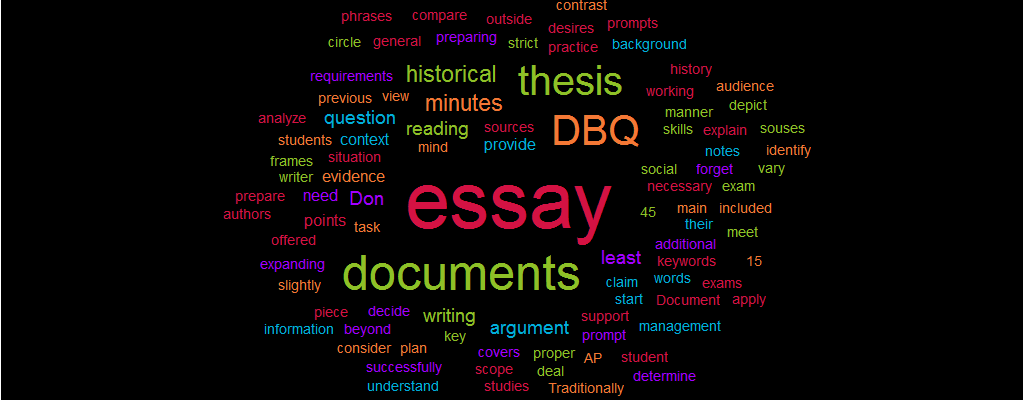How to Successfully Create a DBQ Essay
Publication Date:

To successfully write a DBQ essay means not only being able to write in a proper manner but also the skills of working with documents and strict time management. Not so long ago the DBQ essay might be included in AP history exams, but today its scope is expanding to the social studies. The exam work is just as important as previous preparing and your background.
What will you deal with?
The key point for any student who desires to become a good essay writer is to keep in mind what requirements you have to meet. Traditionally, students are given 15 for reading and 45 minutes for writing, but these time frames may slightly vary. In general, you will have to prepare a thesis, depict historical context of the prompts, support the argument with six documents, provide one piece of outside evidence and consider the context of at least three sources.
What should you start with?
First of all, you should understand your task – in other words, what you need to look for. For that you should identify keywords such as “analyze”, “compare”, “contrast” from the prompt, you can even circle them and any additional keywords. Depending on the prompt, you decide what approach to apply to the souses.
While reading the documents, you should also determine their authors and audience, main points of view and other information that seems necessary. Don’t forget to underline key phrases and make notes in the margins. It is also necessary to categorize sources according to appropriate points.
What does the DBQ essay consist of?
It covers four sections divided into seven points.
- Thesis. You develop a thesis that defenses your claim and covers all aspects of the question. Then you offer a supportive and cohesive argument that illustrates historical complexity.
- Document analysis. You work on the content of at least six documents to support your thesis or argument. Also, you explain the author’s point of view and purpose, historical context for at least four documents.
- Evidence beyond the document. Your task is to expand the historical situation and processes around the question. In other words, you need to provide contextualization. Besides, you should provide additional evidence or example beyond those you found in the offered documents.
- Synthesis. For that, you should explain and draw a connection between the argument and another historical period, era, situation or geographical area.
How to make it in such a short time?
There is only one possible answer – practice and plan or plan and practice. If you want to succeed, you need to know the sequence of your actions and the time in minutes for their execution.
Approximately, it may look in this way:
Reading questions and documents – 5-6 minutes
This time is pretty enough to carefully read the question twice or thrice and move on to the offered documents. While reading them, mark things you find important.
Essay planning – 9-10 minutes
Think well on your thesis. Write down every idea that comes to your mind if you can’t decide on the one. Your thesis answers the question as well as makes a claim. After the thesis, you can start writing an outline. Combine your ideas and topics for paragraphs with notes of the documents.
Writing the essay – 45 minutes
Don’t waste too much time for writing an introduction – two sentences and then declare your thesis. In the body, you should make sure every paragraph starts with a topic sentence that expresses the main idea. Don’t forget to keep your eye on the clock. If you are out of time, you can write at least one sentence for the conclusion and that will be enough. Don’t panic, because emotions won’t help with essay.